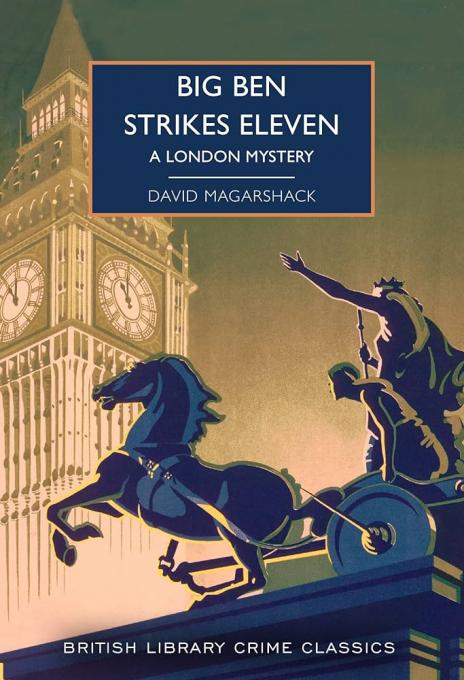A review of Big Ben Strikes Eleven by David Magarshack – 240127
Magarshack was better known as a translator, especially of Russian novels and in particular Dostoevsky, but turned his hand in the 1930s to writing detective fiction. Big Ben Strikes Eleven, which was originally published in 1934 and has now recently been reissued as part of the British Library Crime Classics series, was the first of his three efforts.
Two of my enduring impressions of “classic” Russian literature, of which I have read mercifully little, is that they are overlong and full of deep introspection, traits which, unfortunately, has introduced into his crime fiction. The length of the book is extended by the suspects and witnesses either refusing to co-operate by refusing to answer questions or by giving their own particular version of what happened and even the humblest of characters, the window cleaner who discovers the body, is allowed the space to ruminate upon what implications his find will have on his life.
The book concerns the death of Sir Robert Boniface, found shot in his car close to Hampstead Heath. Was he murdered or was it suicide? As is the way with these novels, the victim is a deeply unpleasant man full of overarching ambition, not beyond a bit of fraud to achieve his business goals and betting the fortunes of his company and those of his investors in a wild attempt to alter the world order. It emerges that the Board of his company has rumbled his plans and are trying to force him out or at least clip his wings. Was this enough to drive him to suicide?
The absence of a gun at the scene suggests, though, that it is murder and there are several suspects with motive enough to kill Boniface. The principal suspect is Frank Littlewood, the disenchanted nephew who has recently been sacked by Boniface and has written a virulent article that indicates that he knows enough to dish the dirt on his uncle. Another with just cause is Matt Caldwell, the stereotypical bohemian artist, who painted a portrait of the businessman which revealed his true character but which Boniface took exception to and refused to pay for.
The third prime suspect is Benjamin Fuller who works in Boniface’s personal office and is spotted by Superintendent Mooney, who is leading the investigation for the Yard, disposing of the gun. His wife is Boniface’s lover and will not grant him a divorce to allow him to marry, perhaps motive enough although the death of the magnate will not solve the impasse in his marital affairs.
The resolution of the case revolves around those irritating little clues that do not fit easily into what otherwise seems prima facie to be an open and shut case, a grey handkerchief, a cinema ticket, a discarded cigar, and some scratches on the paintwork of Boniface’s car. Always be suspicious of a perfect alibi, especially when presented by an inscrutable secretary who clearly knows more than they let on.
The pace of an otherwise pedestrian book only livens up at the end when the culprit makes a break for it and rushes to their death on Westminster Bridge. When Mooney reflects on what has happened and what he could have done to prevent it, Big Ben Strikes eleven. Mooney is a fairly colourless character but is more considered in his actions than his more impetuous colleague, Inspector Beckett, and has the knack of worrying the awkward details into a coherent picture.
The book has its moments but it is easy to see why Magarshack concentrated on developing a reputation as a translator.
This post first appeared on Windowthroughtime | A Wry View Of Life For The World-weary, please read the originial post: here

